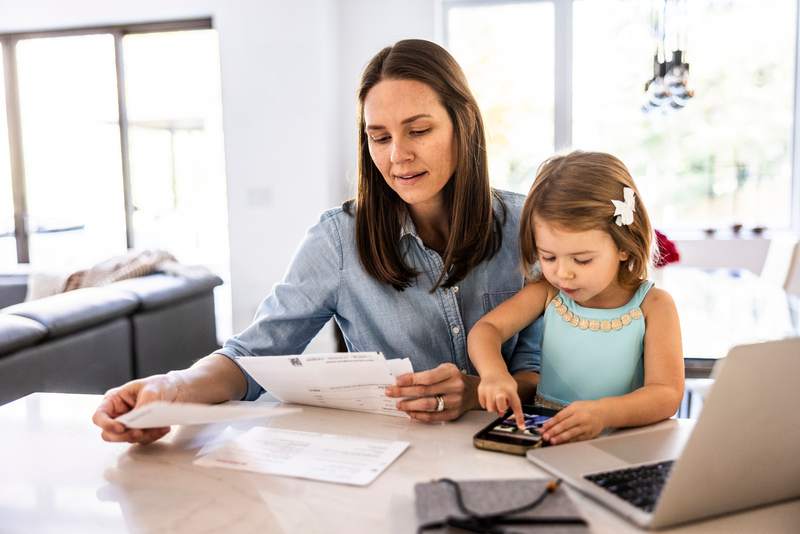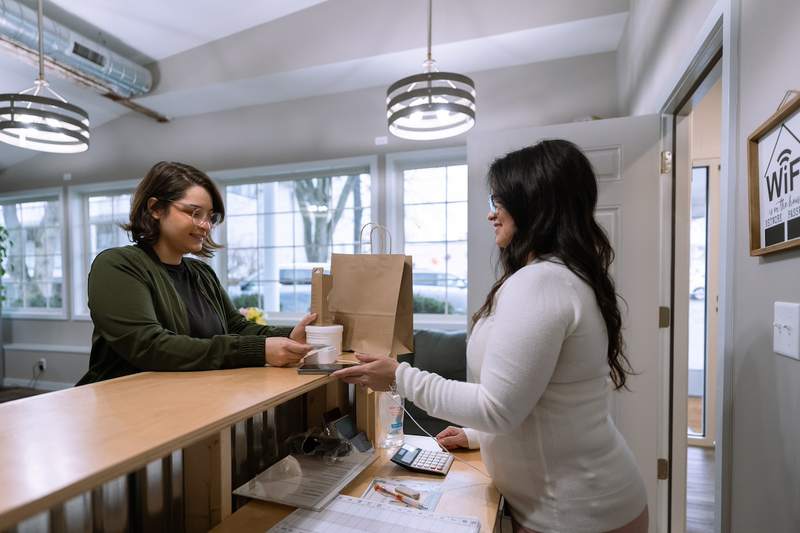A personal loan can help you fund financial emergencies, like auto or home repairs, as well as planned events, like vacations or renovations. A personal loan is typically an unsecured loan, meaning you don’t need to provide collateral, like your home or car.
If you are looking for a personal loan, you can apply through online lenders, banks or credit unions. Here’s how personal loans work, what to expect from lenders and what you need to qualify for one.
Key Takeaways:
- When you apply for a personal loan, you’ll need to provide documents, such as proof of income and your credit report. In addition, your credit score and debt-to-income ratio (based on your earnings) are key factors lenders will assess.
- Securing a personal loan involves determining what you can afford, checking your credit score, choosing the right loan type and shopping for the best lender.
- To improve your chances of getting approval for a personal loan, consider steps such as improving your credit score, reducing existing debt and possibly securing a co-signer for better loan terms.
What Are The Requirements For A Personal Loan?
You’ll need to gather your paperwork, including personal contact information, such as a photo ID, like a driver’s license or passport. In addition, you’ll need to provide proof of employment and income, like W-2s and pay stubs, and even a utility bill to verify your home address. It’s standard for lenders to pull your credit report when you apply for a personal loan.
Lenders should provide you with a list of documentation requirements in advance of your application. If you forget to include any of the paperwork, it can jeopardize how long it takes to be approved (or denied). Your lender will also consider your credit score, debt-to-income ratio and credit history when evaluating your application.
Before you apply, set aside three months’ worth of pay stubs and your most recent W-2s, and collect your passport, Social Security card and birth certificate just in case the lender asks for them. Take time to review your credit report for any mistakes that could negatively impact your credit, and check your credit score. Having your documents in order and a working knowledge of your credit is the best way to prepare for a personal loan application.
Personal Loan Documentation Checklist
Here are the requirements for a personal loan, although they may vary slightly by lender.
- Social Security number or Individual Tax Identification Number (ITIN) or copy of card
- Copy of passport or Real ID, birth certificate or driver’s license (ask your lender what they prefer)
- W-2s or similar tax documents, like 1099s
- Employer’s information, such as phone or email contact
- Pay stubs and any additional income documentation (gross monthly amounts)
- Personal contact information, like home address, phone number and email address
- Utility bill (to verify address)
- Monthly recurring debts, rent, mortgage payments, car payments and/or student loans
- Loan purpose, amount and preferred loan terms
What’s Your Goal?
Buy A Home
Discover mortgage options that fit your unique financial needs.

Refinance
Refinance your mortgage to have more money for what matters.
Tap Into Equity
Use your home’s equity and unlock cash to achieve your goals.
Taking Out A Personal Loan: A 7-Step Guide
Those interested in taking out a personal loan can take these steps when applying for one.
1. Determine What You Can Afford
What you’ll need to know about getting a personal loan hinges on how much you can afford to borrow.
If you haven’t already, create a household budget listing your monthly expenses, like rent or mortgage payments, credit card payments and other personal debt, like student loans. Also include estimates for discretionary spending, such as dining out and entertainment, and expenses that vary each month, such as your electric bill and transportation costs.
Once you’ve done this, you can see how much room you have in your budget for a monthly personal loan payment. Don’t take out a loan that comes with a payment higher than what you can afford.
Factor in any fees that lenders charge. Some levy an origination fee that can be 1% – 5% of the total amount that you borrow. If you take out a $20,000 loan, you could pay an origination fee of $200 – $1,000.
2. Check Your Credit Score And Report
You’ll qualify for the best interest rates and terms on a personal loan if you have a higher credit score. Before applying, order a free copy of your credit report from AnnualCreditReport.com to review your credit history and identify any potential errors or outdated information on your report.
You should also order your FICO® credit report. You might have to pay for this, but you can order it from any of the three national credit bureaus: Experian™, Equifax® or TransUnion®.
Most lenders consider a FICO® score of 800 or higher to be an excellent one and 740 or higher to be very good. If you have a credit score that is significantly lower than that, building credit should be at the top of your to-do list before applying for a personal loan. You can do that by paying down your credit cards and paying off any other outstanding debts. If this isn’t possible, applying with a co-signer or co-borrower can also improve your odds of qualifying for a personal loan.
3. Choose The Type Of Personal Loan You Need
There are a few types of personal loans, but most are unsecured, meaning the lenders won’t ask for collateral. One example of an unsecured loan is a debt consolidation loan used to consolidate high-interest credit card debt. If you have poor credit, you might apply with a co-signer to increase your odds of approval for this type of loan.
If no one is willing to co-sign for you, you could apply for a secured personal loan instead, one in which you put up collateral, such as a security deposit, to lessen the risk that lenders are taking on when working with you. If you own a home with equity, you could also consider a mortgage refinance to pay off any debts or pay for renovations or other big-ticket items.
4. Shop Around And Choose A Lender
Don’t just accept the first offer you receive from a lender. Instead, shop around with several lenders and compare their offers, customer service ratings and loan repayment flexibility. Researching and evaluating multiple lenders gives you the best chance to nab the lowest interest rates and better terms for your financial situation.
In addition to comparing the interest rates offered by different lenders, look at the fees they charge. Some lenders might charge an origination fee and others won’t. But if a lender that charges an origination fee is also quoting you a lower interest rate, that loan might still be the most affordable over time.
There are several ways you can get a personal loan.
- Peer-to-peer lenders: Peer-to-peer personal loans are funded by individual investors or companies. You can find these lenders online, with many of them offering personal loans. Peer-to-peer lenders charge a variety of fees, while others have limits on how much they are willing to lend. Do your research before choosing one of these companies.
- Banks and credit unions: Banks and credit unions usually offer low rates on personal loans. But you will have to meet their credit standards to qualify. This could be a good option if you already have an account with a local bank or credit union.
- Online finance companies: Online lenders work with banks to expedite the process of originating personal loans. These online options often come with an easier application and approval process. They may also provide you with your funds faster.
5. Apply For The Loan
Once you’ve selected a lender, it’s time to apply for your loan. With many lenders, you can fill out an application online without ever having to talk to a loan officer. With banks or credit unions, you might have to meet with a loan officer or at least speak to one on the phone. When filling out your loan application, you’ll usually have to provide your full name and address, Social Security number and estimates for how much you earn each month and how much debt you are responsible for paying down each month. Here’s what you need to know about getting a personal loan when it comes to paperwork.
Your lender will typically ask you to back up your information by providing copies of your two most recent pay stubs and two years’ worth of W-2s or 1099s, as well as your last two months of bank statements. In addition, you’ll need to provide official proof of identity (often two forms) as a citizen or permanent resident with a birth certificate, state-issued ID or driver’s license, or U.S. passport. Be sure to keep a utility bill or two on hand as well.
If you have a credit score below 640 and/or a debt-to-income ratio higher than 35%, or if the lender can’t verify your income or residency, your application may be rejected.
Pro tip: Don’t make any big purchases before you apply for a personal loan if it will drain your banking account or add more debt to your credit cards.
6. Close On The Loan
Once your lender approves your loan, they will officially close it, meaning that you will receive your funds, usually in a single payment.
You’ll sign papers stating how much you are borrowing, the loan’s interest rate, your monthly payment and its repayment schedule. Depending on your lender, this can be done online. You may be asked to pay a processing fee or pre-closure charges – often 1% – 10% percent of the loan amount, according to Experian. Ask your lender in advance about any potential closing fees. Depending on the lender and the amount you are borrowing, it could take a few minutes, hours or days to get your money.
7. Start Making Monthly Payments
Once you receive your funds, you’ll start paying back what you’ve borrowed in regular monthly payments, with interest. How much you pay each month depends on what you’ve borrowed, your interest rate and whether you rolled any origination or other fees into your loan amount. Consider making a new budget to incorporate these new payments so you aren’t surprised by the change in your finances when the payment term begins. You can either mail your lender a check each month or pay online through a password-protected portal or website, depending on the lender.
Consider setting up automatic payments on your loan so you don’t incur late fees or, worse, default on your loan.
Get A Personal Loan Today
Find a lender that can help you find the right loan terms for your financial situation.
Types Of Personal Loans
There are several types of personal loans for which you can apply. These include:
- A fixed-rate personal loan comes with an interest rate that never changes during its term. This makes budgeting for your monthly payments easier. Because your interest rate doesn’t change, your monthly payment won’t either.
- A variable-rate loan is the opposite of a fixed-rate loan. Its interest rate will change during your loan’s terms. This type of loan often starts with an initial interest rate that is lower than what you’d get with a standard fixed-rate loan. During your loan’s fixed period, this lower interest rate will remain in place. After the fixed period ends, your loan enters its variable period, during which its interest rate will change according to a set schedule. It will then rise or fall according to whatever economic index it is tied to.
- A secured loan is tied to some form of collateral that your lender can take if you stop making payments. An auto loan is one example. If you stop making payments, your lender can repossess your car. Your car serves as collateral. Secured loans tend to come with lower interest rates because lenders are taking on less risk.
- Most personal loans fall under the category of an unsecured loan – meaning it comes with no collateral. If you stop making payments on an unsecured personal loan, your lender can’t take your house, car or any other form of collateral. Because lenders are taking on more risk, they usually charge higher interest rates on unsecured personal loans. And if you default, there will likely still be financial or legal repercussions.
- When you use a debt consolidation loan, you take out a new loan and use the money you receive to combine multiple debts into one debt (your new loan) with one interest rate and payment. The goal is to obtain a lower interest rate than the average rate attached to your other debts. For example, you might take out a personal loan with an interest rate of 8% to pay off credit card debt that comes with an average interest rate of 19%. As long as you don’t go back into debt by using your credit cards or taking out more personal loans, this loan can be beneficial over time for your credit and debt-to-income ratio.
Tips To Qualify For A Personal Loan
Your eligibility for a personal loan depends on how much money you want to borrow and your credit score, income and overall financial profile. Here are some helpful tips to improve your chances:
- Check and improve your credit score: Review your credit report for any errors, and take steps to pay down existing debt and make on-time payments to boost your score. Aim for 670 or higher to get the best terms.
- Reduce your debts: A lower debt-to-income ratio shows lenders that you’re not overextended financially. Before you apply, pay off any existing loans and credit card balances.
- Borrow only what you need: Don’t ask for more money than necessary; a lower amount is more likely to be approved by a lender.
- Find a co-signer: If your credit and income aren’t strong enough on their own, a co-signer with good credit can increase your chances of approval.
- Research lenders: Compare interest rates, terms and fees from banks, credit unions and online lenders to find the best financial fit for you. Why? Each lender has different qualifying criteria.
Looking for Access To Money?
Just answer a few simple questions and we’ll help you find the funds you need.
The Bottom Line
A personal loan can help you cover unexpected emergencies or consolidate high-interest-rate debts into one loan with a lower rate. Remember, though, that applying for a personal loan can take time and it’s important to do your research before choosing a lender. If you’re ready to begin the process, you can apply for a personal loan.
If you are denied a loan due to a low credit score, a high debt-to-income ratio, a lack of documentation or some other reason, you maystillbe able to get one through an alternative avenue. You could ask a friend or family member to act as a co-signer, apply for a secured loan using collateral, reduce your loan amount (some lenders may approve a smaller loan even if they rejected you for a larger amount) or increase your income with a side gig.
If your credit is keeping you from a personal loan, review your credit report and FICO® score, identify what needs improvement and consider applying for a personal loan when your credit improves.

Maya Dollarhide
Maya Dollarhide is a freelance writer with over a decade of experience covering personal finance topics. Her writing credits include AARP, Bankrate, Investopedia, CNN.com, Yahoo Finance and Lending Tree. She enjoys writing articles and producing multimedia content that helps individuals and families make informed decisions about their money, from mortgages and home loans to reducing credit card debt and saving for retirement. She has also created educational materials for use in schools to teach young people about personal finance, from opening up a bank account to saving for college and beyond.












